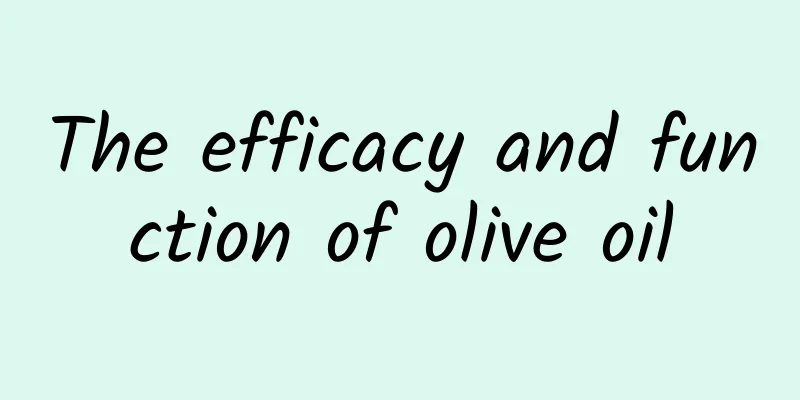How to grow zucchini? Zucchini planting tips

|
Zucchini is a common vegetable, so how to better cultivate zucchini? Today I will tell you in detail: Seed selection and soakingRemove the debris, select clean and full seeds with a thousand-seed weight of about 200g, and place them in a clay pot or other oil-free container. Soak the seeds in cold water first, then scald them in warm water at 50-55℃, stir constantly, keep for 15-20 minutes, cool naturally to 20-30℃, soak the seeds for 4-6 hours, remove them and soak them in 1% potassium permanganate for 20-30 minutes to disinfect and sterilize. Air dry, and heat to germinate when half dry, preferably at 25℃. If the seeds are large, they can be turned during germination to promote uniform germination, but they should not be turned after germination. sowingWhen the buds are about 1.5 cm long, sow them in sunny and warm weather. If it is rainy and you cannot sow them, place the seeds in a cool place to control the growth of the young buds. The nutrient soil for sowing should be prepared 20-30 days before sowing. Use disease-free soil and farmyard manure that have not been used to grow melons and vegetables. Usually, mix 6 parts of garden soil with 4 parts of decomposed horse manure or manure. Place it in the seedbed or paper bag or plastic pot (9-10cm in diameter) with a thickness of 8-9cm. Cover with soil about 2cm after sowing. Seedling growthSeedlings tend to grow too tall, so temperature and humidity need to be strictly controlled. After sowing, the temperature should be kept high before the seedlings emerge from the soil layer, with a daytime temperature of 25-30℃, a night temperature of 18-20℃, a ground temperature of 22-24℃, and a relative humidity of 80-90%. Seedlings will emerge in about 3-4 days. After the seedlings emerge, the temperature should be lowered and ventilation should be appropriate, with a daytime temperature of about 25℃ and a night temperature of 13-14℃. After the first true leaf unfolds, the night temperature drops to 12℃. 8-10 days before transplanting, the ventilation should be gradually increased, and the temperature should be lowered to harden the seedlings, generally 15-25℃ during the day and 6-8℃ at night. Planting and field managementAfter 30-35 days of seedling management, seedlings with 3-4 true leaves are cultivated and can be transplanted. Before planting, sufficient basal fertilizer should be applied. 3000-5000 kg of high-quality farmyard manure should be applied per mu, and horse manure, sheep manure, etc. can also be applied. After the land is prepared, ridges are made with a distance of 60-65 cm, and the soil is dug with a spacing of 40-50 cm between plants. 2000-2500 plants are planted per mu. It can also be made into flat beds with a width of 1.3 m, with two rows planted per bed. When planting seedlings, plant them in water. After the water seeps down, seal the ridges and straighten the vines. The ground temperature during the safe planting period is above 13℃ and the night temperature is not lower than 10℃. After the seedlings have grown, topdressing should be done (apply 150-200 kg of cake fertilizer, or 50-60 kg of triple compound fertilizer), and watering should be done. However, due to the low ground temperature, it is not advisable to water too much. After that, the soil should be loosened in time, and no water or fertilizer should be applied. Watering should be done after the first melon grows to 10-12 cm. After the melons are formed, watering should be done once every 5-7 days to keep the topsoil moist. Drainage is required in the rainy season. During the melon-bearing period, topdressing should be carried out along the water, and it is generally appropriate to apply topdressing 2-3 times. Each time, 1000-1500 kg/mu of manure or 10-15 kg/mu of ammonium carbonate should be applied. Pay attention to water and fertilizer management. Too much fertilizer and water in the seedling stage or the first female flower fruiting stage will cause leggy growth; if the water and fertilizer are not enough in the later stage, the yield will be reduced. In addition, too many fruits left in the early stage will easily cause poor seedling development and affect the total yield. In order to achieve early maturity and high yield, artificial pollination should also be carried out (especially when there is no insect pollination). Every morning from 6 to 8, pick the male flowers that are in bloom, peel off the corolla, expose the stamens, and apply it several times on the stigma of the female flowers. If you need to save seeds, you should generally choose melons that are produced later, otherwise the yield will be affected; plants specifically for saving seeds are not subject to this restriction. |
<<: Zucchini nutritional ingredients and benefits
>>: What are the varieties of zucchini?
Recommend
How to make yam porridge How to make yam porridge
Yam is a special food ingredient that can be used...
How to eat mulberries? Common ways to eat mulberries
Mulberries are a kind of fruit that is available ...
The benefits of eating blackcurrant for women
Black currant is a delicious berry. When ripe, it...
How is Yala International? Yala International reviews and website information
What is the website of Yara International? Yara In...
The efficacy and function of money tree The use of money tree
Money tree is a perennial evergreen plant native ...
Cuscuta australis porridge
Cuscuta atarum porridge is very effective in treat...
Preparation and efficacy of prune puree
Prune puree is a kind of food. Now let's lear...
Nutritional value of purslane
Purslane is a vegetable rich in "natural ant...
The efficacy and function of dried raisins
Raisins are a kind of dried fruit food material t...
The efficacy of corn water The medicinal value of corn water
Corn water is the water left over from cooking co...
How to make delicious white radish and mutton soup
White radish is the most common health food in li...
The efficacy and function of crystal palm
Crystal palm, also known as treasure grass, is an...
The efficacy and function of raw cashew kernels
Raw cashew kernels are a type of nut ingredient t...
How is "Reference Daily"? "Reference Daily" review and website information
What is La Référence? La Référence is an influenti...
What is SkyTeam like? SkyTeam reviews and website information
What is SkyTeam? SkyTeam is the world's second...









